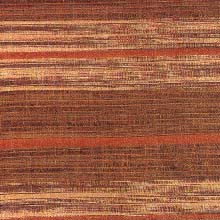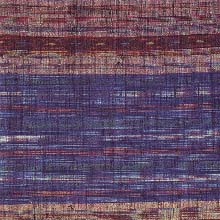Weave (p. 88 )
1. Produced in Hachimancho Gujogun, Gifu Prefecture.
2. Characteristics: Tsumugi hand woven with hand spun threads and dyed with plant dyes. First woven with the threads of wild cocoons originated in India, it is woven today with the threads from double cocoons. Designs are mostly stripes, crossed stripes, splash patterns(Kasuri) and some geometrical patterns. It has quality of both silk and wool, strong, warm and free from wrinkles.
3. Uses: Clothing.
4. History: This district was known as producing quality silk threads since more than 1,000 years ago. The silk threads, called "Sodai Ginu," had been designated as the threads for weaving formal garments for the priests in Ise Shrine. When the fugitives of the Heike Clan settled here, they started weaving "Tsumugi" by spinning from wild cocoons an dyeing threads with plant dyes. Based on this weaving tradition, the Gujo Weaving Institute started in 1947 weaving the Tsumugi which is called "Gujo Tsumugi" today. Threads are taken from the cocoon produced by spring silkworms.




